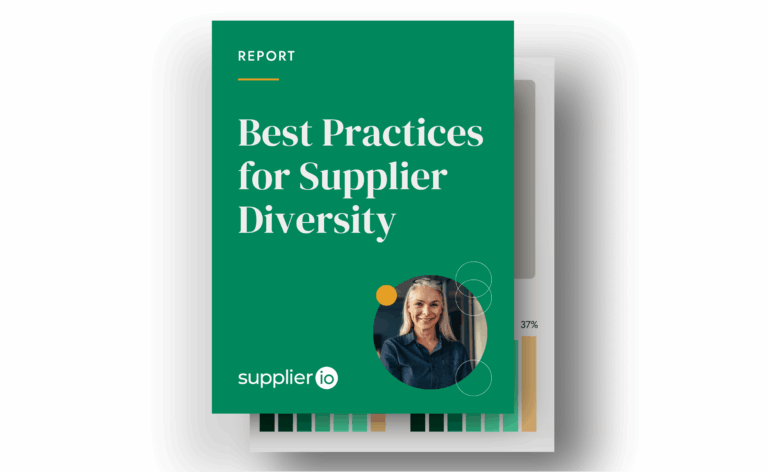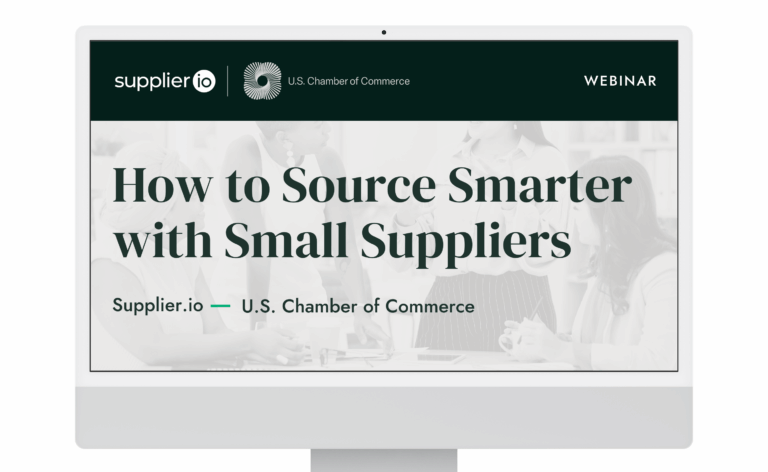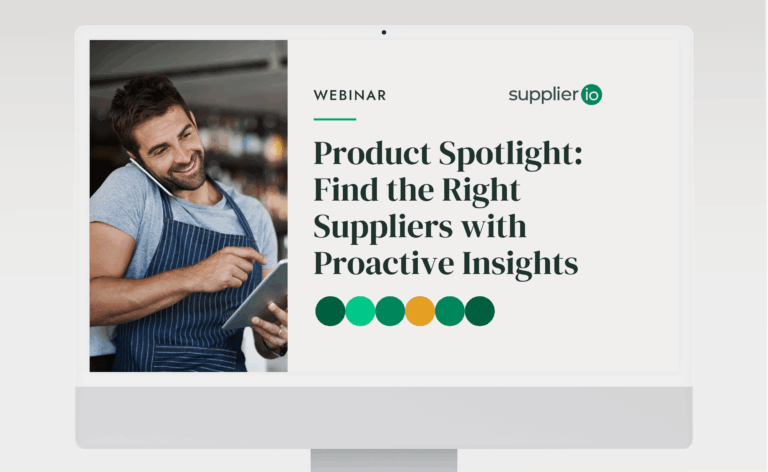Sustainable Procurement: Driving Value Creation and Managing Risk
Industry leaders the Hackett Group and Shelly Brown share the business case, insights, and best practices for sustainable procurement

Supplier.io recently spoke with The Hackett Group’s Kurt Albertson, Procurement Advisory – Principal and North American Practice Lead, and Shelly Brown, 20+ year responsible sourcing veteran, about sustainability’s role in procurement, the evolution of procurement in adding value to businesses, and how procurement helps manage a company’s risk.
Procurement is experiencing an evolution. It’s gone from being largely about cost reduction to actively driving business value. Simply put, procurement is more critical to businesses than ever. However, this visibility comes with increased scrutiny from stakeholders, as well as growing regulations. Audits are more common and new regulations impact results.
Kurt Albertson, Procurement Advisory – Principal and North American Practice Lead at The Hackett Group, and Shelly Brown, 20+ year responsible sourcing veteran, recently met with Supplier.io to share their perspectives and best practices on how to ensure procurement drives business value and mitigates risk.
ESG Driving Forces
Procurement leaders don’t always understand their role in enabling revenue or driving brand value, but these areas provide opportunities to be recognized as value creators and not just as cost reducers. To do that, procurement has the challenge of aligning with corporate objectives. It also has to clearly communicate its impact on brand value and revenue, as well as the risks a business can incur when corporate and procurement initiatives are not aligned.
Albertson brought up that reducing emissions is largely thought of as the right thing to do. “Nobody will disagree with that, but that’s not going to have the teeth when it comes to making tradeoffs with your business stakeholder population.” So procurement leaders need to demonstrate the business value of doing the right thing in order to get buy-in from stakeholders.
Procurement faces other challenges: Fragmented data on certifications, ratings, and scores, multiple and uncertain regulations and guidelines, and low visibility into supplier ESG status. But despite these challenges, sustainability programs are growing.
Brown emphasized how important it is to understand the “why” behind your strategy and make sure the solution you build not only aligns with what leadership has committed to, but is truly doable. “Make certain that you’ve got a good cadence of buy-in to the milestones and the timing on the calendar to achieve the goal.”
What Top Procurement Teams Are Doing
Albertson said the top performers in sustainable procurement do things differently than the rest. They have clear goals along with advanced and mature sustainability programs rolled out across all spend areas. Top performers also set themselves apart by having clauses in their contracts related to sustainability and hold their vendors accountable to them.
Top performers also build tracking into their procurement programs. Metrics like CO2, waste, percentage of waste recycled, and water consumption are most commonly tracked, but they’re being tracked for more than just saving money. “It does seem like most of this is being done to assess the space and understand the risk,” Albertson said.
Albertson and Brown also discussed creating a risk framework by ranking your suppliers (high, medium, low), and then creating parameters for each group. “Maybe for your high-risk suppliers, you require them to follow some type of industry standard guideline,” Albertson said. “But the less-risk suppliers, you may allow them to self-report information.” This doesn’t require science-based targets or CDPs—it’s less about asking for specific numbers and more about setting expectations with suppliers.
Capturing Better Supply Chain Data
Procurement has a broader set of business objectives and strategies than ever before, and that’s going to require information and data. “If you don’t have a relationship with your data analytics team, reach out,” Brown said.
Brown also shared that looking at your operations from a global perspective can be helpful in narrowing your focus on what data you collect. After all, if you operate globally, the dynamics of your supply chain in Asia look much different than in North America, Latin America, and EMEA.
“Procurement is becoming a much more information-based organization,” Albertson added. And information is becoming more essential to the long-term strategy of many businesses.
Building Relationships
Partnering with, training, educating, and getting category and sourcing managers involved in the process early can be extremely helpful. Brown shared a simple way to build relationships. “Go to your client and ask them, ‘How are you tackling these issues as a part of your supply chain?’”
Other valuable stakeholders to partner with include supply chain, investor relations, marketing, legal, HR, sales, government affairs, and external regulators.
Conclusion
Sustainability isn’t something you’ll figure out overnight. But by building relationships, using data and research to quantify ESG strategies and investments, and exploring the relationships between reputational and financial value generation, procurement can influence future strategy, mitigate risk, and drive business value.




